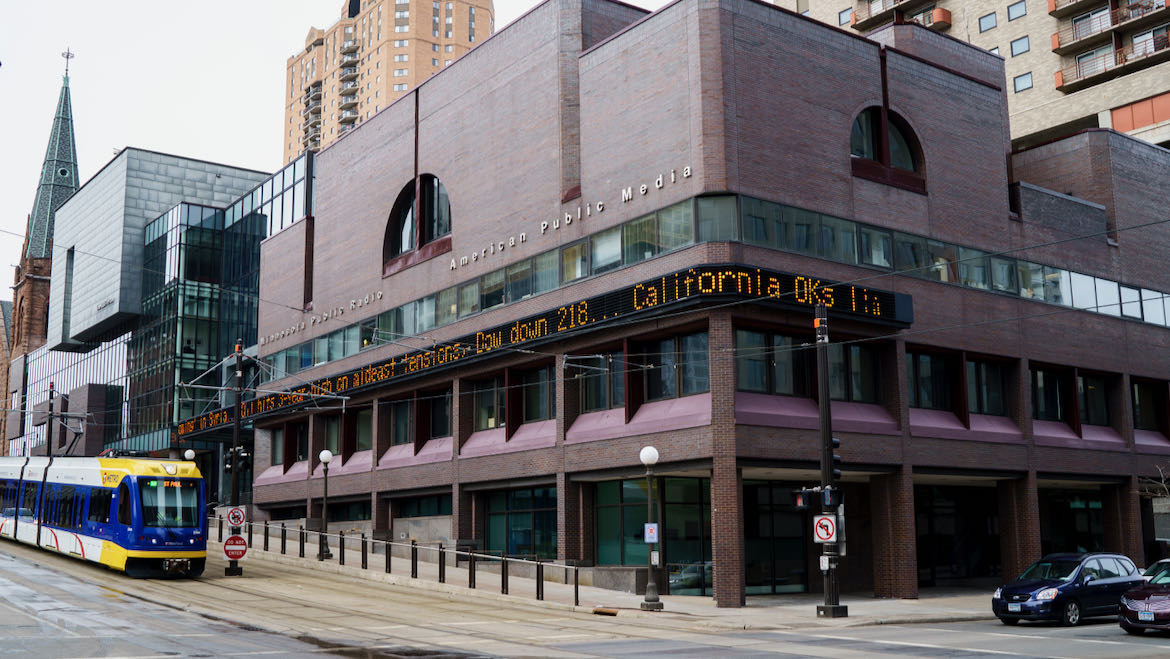Bond market expected to help with pubcasting expansion
The bond market is offering new capital financing options for public broadcasting this week with the expected sale of $6.5 million in tax-exempt bonds for Colorado Public Radio’s expansion. [After this article was published, the entire lot of bonds sold in one day at 5.8 percent.]
Other pubcasters will follow. Nashville Public Radio plans to sell about $3 million in bonds in March to cover purchase of a second station in town. And the new nonprofit Maryland Public Radio aims to finance the $5 million purchase of Baltimore’s WJHU. Pubcasters have 10 to 15 borrowings under review at George K. Baum & Co., the investment bank working closely with Public Radio Capital, a nonprofit that is shepherding potential borrowers into the bond market.
“It’s like our credit rating has gone up enormously,” says Max Wycisk, president of Colorado Public Radio. Compared to a short-term bank loan, the network will save $350,000 to $400,000 a year, he estimates.
Colorado’s bonds, expected to be sold to investors starting Jan. 15, will finance last year’s purchases of three AM stations to launch a news-and-information network around the state, parallel to its original classical-music-and-news network.
Similarly, Nashville Public Radio expects to start a news/info service on its new AM station in April, supplementing its classical/news service on WPLN-FM. In December, the nonprofit paid $3 million to buy WKDA-AM from local broadcaster William O. Barry. With the additional channel, Nashville Public Radio will be able to double its program offerings, adding such shows as The World, Talk of the Nation and To the Point, says Carl Pedersen, director of finance and technology.
That fits with a major purpose of Public Radio Capital, which wants to help pubradio add new radio formats and audiences. When nearby frequencies unexpectedly become available, bonds will also help university-owned stations move more quickly than they could if they held a fundraiser or asked the state to issue bonds.
A major Midwest state university wants to ease the use of bond financing by asking Public Radio Capital to step in as legal owner of its station and additional channels that it plans to acquire using bond proceeds, according to Marc Hand, managing director of Public Radio Capital.
The group also anticipates that some public TV stations will use bonds to raise parts of their digital transition capital, Hand says.
Passing grades from Wall Street
Wall Street’s three major bond-rating firms gave their blessing to Colorado Public Radio’s debt offering. Fitch Inc., one of the three firms, gave the network’s bonds a BBB+ rating last week, which is near the median for hospitals and just below the ratings attained by many universities, according to Jason F. Dickerson, a senior director at the firm. (See table at right.)
Moody’s Investors Services and Standard & Poor’s assigned ratings on their own scales that are one step down from Fitch’s: Baa2 for Moody’s and BBB for S&P.
Fitch rated the bonds seven steps down from the stellar AAA ratings that it would give a strong state government but three steps above noninvestment-grade bonds, which aren’t secure enough for many investors.
The news is that public broadcasters look financially secure enough to sell bonds at all on their own credit. Even though the Colorado Educational and Cultural Facilities Authority is the official issuer of the Colorado network’s bonds–as it is expected to be for pubcasters around the country–the bonds are based on the pubcaster’s own credit.
For years, many stations owned by states or state universities have raised expansion funds from bond sales by state governments, but those were backed by the states’ credit. Other stations have used bonds sold by banks, backed by the banks’ credit, for which the bank charged a hefty fee.
“Now we can borrow on our own,” Wycisk says. “Our parents don’t have to be co-signers.” The Colorado network, in fact, is using the bonds in large part to repay a short-term loan in the form of variable-rate bonds issued by a bank for purchase of one of the three AM stations.
The new bonds are a better deal, Wycisk says. Though the network will have to make payments for 20 years instead of seven, the payments will be much smaller, which is important in the early years when the news/info network will still be developing its own revenues.
Baum, the underwriter of this week’s bonds, hadn’t yet set a price last week, but was expecting 5.5 to 6 percent, says Kimberly Swain Pierce, senior v.p. in the firm’s Denver office. This is lower than some bank loans and also has the advantage of a fixed rate.
Not as risky as you’d think
“When you talk about [a bond issue by] a public radio station, the instinct of a lot of investment professionals is they couldn’t possibly be investment grade,” Dickerson says. Stations’ pledge drives “give the impression that they are more financially volatile than they are in fact.” That became clear as Fitch and the other ratings firms examined Colorado Public Radio’s history of rising revenues and audience.
In Moody’s Jan. 4 announcement, for instance, it noted appreciatively that the network attracts a 6 percent share of radio listening in the Denver area, earns an average operating surplus of 15.8 percent, has an average listener contribution of $119 a year and can boast steadily increasing listener donations despite economic downturns since 1988.
Standard & Poor’s liked the network’s “long history of good operating performance and liquidity” and its fiscal success with earlier expansions.
Fitch noted that public radio is unlikely to face harmful competition, given its “dominance of both in-depth news and classical music programming.”
To assure investors that it can pay its interest even in hard times, Colorado Public Radio put up its station licenses as a last-resort guarantee and agreed to limits on its finances. It promised, for instance, not to let its cash and investments drop below 20 percent of the outstanding principal on the bonds, Pierce says.
The network also agreed not to go further into debt to a degree that would hurt its bond rating. To resume its expansion, the network “would have to go to agencies and show pretty convincingly why adding another station would be a financial benefit,” says Dickerson.
That’s okay with Wycisk. The theory, he says, is that the organization is borrowing against the service and revenues from the added news/info network. “We need to see if that plays out over the next couple of years.” Colorado Public Radio may want to expand further later on. “For now, we’re in an assimilation period.”







